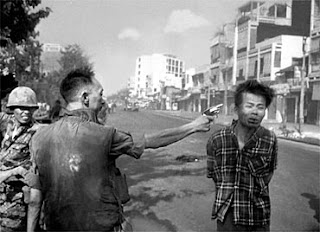February 28
The explosion took place during a demonstration for President John Tyler, who was aboard the ship with 400 administration officials and other compatriots. Late in the afternoon, after the massive gun had been fired several times, Secretary of the Navy Thomas Gilmer requested that the guests be treated to one last demonstration of the gun's awesome power. Gilmer died in the subsequent blast, which was caused by an undetected and catastrophic manufacturing defect that caused the lower barrel of the gun to shatter. Gilmer was killed when a piece of shrapnel struck him in the head; a slave of President Tyler’s named Armistead (after Tyler’s mother) was also dispatched by a piece of flying iron. Abel Upshur lost his arms and legs and was disemboweled by the blast, while the severed arm of Virgil Maxcy, an American diplomat serving in Belgium, struck a bystander, covering her in blood. (In Nathaniel Currie’s lithograph of the unfortunate event, Maxcy’s arm can be seen flying through the air.) As the dead and wounded law scattered across the boat, President Tyler comforted a distraught young woman named Julia Gardiner whose father, Colonel David Gardiner, was de-limbed along with Upshur. Gardiner and Tyler married four months later.
When the Princeton returned to Washington, five of the six men killed in the explosion were laid in state in the East Room of the White House. Armistead’s body was delivered instead to his family. When John Tyler died eighteen years later, he did so as a member of the Confederate House of Representatives.
Thirty-three years after the “Peacemaker” exploded, the United States senate ratified the so-called “Manypenny agreement” between the United States and the Oglala Sioux, the Arapaho and Cheyenne; it was so named for George W. Manypenny, an American commissioner who had previously negotiated several treaties between the US and American Indians. Although the 1868 treaty of Ft. Laramie had set aside an enormous area of the northern Plains known at the time as the “Great Sioux Reservation.” Amendments to the 1868 treaty could only take place with the approval of three-quarters of the people.
Throughout the 1870s the United States abrogated the St. Laramie agreement, first by allowing railroad companies to cut through the reservation and then -- in 1875 -- by opening up Indian lands to miners. Following a short and brutal war that included the Battle of Little Big Horn, the US imposed its will on the Sioux by withholding rations and forcing their chiefs to the negotiating table. According to the terms of the one-sided Manypenny arrangement -- which most certainly did not have the support of three quarters of the population -- the Sioux were to surrender claims to the Black Hills region, which stretched across five states and covered 47 million acres of land stuffed with gold and other resources that would enrich American industrialists and financiers while impoverish the indigenous people who lived there.
Three years after the agreement that bore his name was ratified, George Manypenny wrote a book entitled Our Indian Wards. There he wrote that
It can not be denied, that from the period when the first infant settlements were made upon the Atlantic sea-board by European colonies, until the present time, there have been constant, persistent, and unceasing efforts on the part of the white man to drive the Indian from his hunting ground and his home.In 1979, the Indian Court of Claims, established by the US in 1944 to review and rectify historic treaty violations, judged the Manypenny agreement to be one part of the “constant, persistent, and unceasing drive” to dispossess Indian people of their land; the court ordered financial restitution of more than $100 million for the Black Hills. In 1980, the Supreme Court of the United States agreed that the "sale" of the Black Hills had not been conducted legally. It refused, however, to return the land to the Lakota people and ordered them to accept belated financial compensation instead.
The Lakota refused, and the $100 million continues to lie in escrow, accruing interest to this day.
Labels: american indians, naval disasters





















